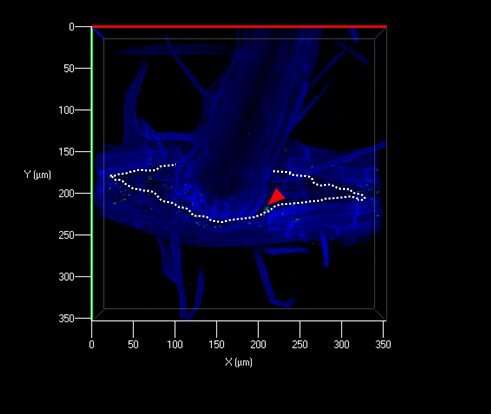Study pinpoints how Salmonella sneaks into plant roots

In recent years, contamination of salad vegetables by E. coli and salmonella bacteria—the most common causes of food poisoning—have led to large-scale recalls. Although most salmonella outbreaks are linked to contamination from post-harvest handling and transportation, this infectious bacterium can also enter the plant earlier, from contaminated soil.
But how exactly does it enter from the soil? A new study from the Indian Institute of Science (IISc) and the University of Agricultural Sciences (UAS), Bengaluru, has found the answer. Unlike other disease-causing bacteria that enter the root, fruit or leaf by producing enzymes to break down the plant's cell wall, salmonella sneaks in through a tiny gap created when a lateral root branches out from the plant's primary root, the study shows.
"This is the first time we have shown how different it is from other plant pathogens based on its ability to colonize the roots," says Kapudeep Karmakar, Ph.D. student in the Department of Microbiology and Cell Biology, IISc, and first author of the paper published in BMC Plant Biology.
Karmakar and colleagues studied how different types of bacteria including salmonella colonize the roots of tomato plants. While other bacteria were spread across the root, salmonella bacteria clustered almost exclusively around areas where lateral roots emerge. When a lateral root pierces open the wall of the primary root to spread across the soil, it leaves behind a tiny opening. Using fluorescent tagging and imaging, the researchers figured out that salmonella bacteria were using this gap to enter the plant.
The researchers also noticed that under the same conditions, a plant with a greater number of lateral roots harboured a greater concentration of salmonella than one with fewer lateral roots. Similarly, when plants were artificially induced to produce more lateral roots, the salmonella concentration increased. Tomatoes plucked from these plants also tested positive for salmonella infection, revealing its ability to travel all the way up to the fruit. "It is just like a systemic infection in humans," says senior author Dipshikha Chakravortty, Professor, Department of Microbiology and Cell Biology, IISc.
There are several possible sources from where salmonella can reach the soil, such as manure containing animal faeces or contaminated irrigation water, points out Karmakar. "Various studies show that irrigation water gets contaminated by sewage water. When that irrigation water is applied in the field, the soil becomes the portal for salmonella to enter," he says.
Environmental factors also appear to aid its infiltration. The researchers found that when salt concentration in the soil increases, plants produce more lateral roots and therefore become more vulnerable to salmonella infection.
"salmonella is increasingly becoming a notorious pathogen," says Chakravortty. "It can cause a diverse range of infections in diverse hosts, from birds to reptiles to humans, to poultry and livestock. Mortality is high, because it is now known to cross the blood-brain barrier."
In follow-up studies, the researchers plan to look at salmonella infiltration in other edible vegetables, and work on strategies to detect and prevent soil contamination. "If the soil is contaminated, there has to be a mechanism to either decontaminate it, or use some antidotes like bio-fertilizers that can outcompete the pathogenic bacteria," says Chakravortty.
More information: Kapudeep Karmakar et al. Root mediated uptake of Salmonella is different from phyto-pathogen and associated with the colonization of edible organs, BMC Plant Biology (2018). DOI: 10.1186/s12870-018-1578-9
Journal information: BMC Plant Biology
Provided by Indian Institute of Science

















